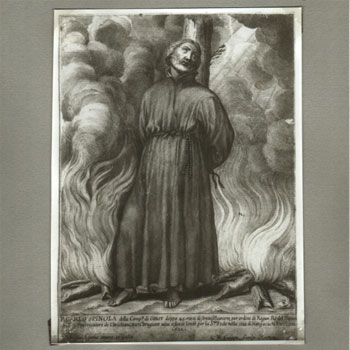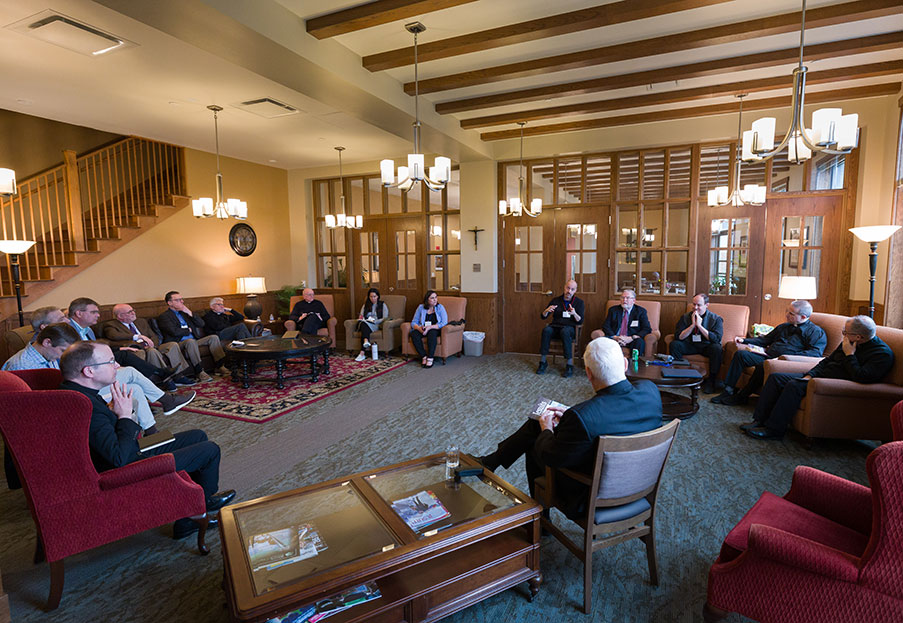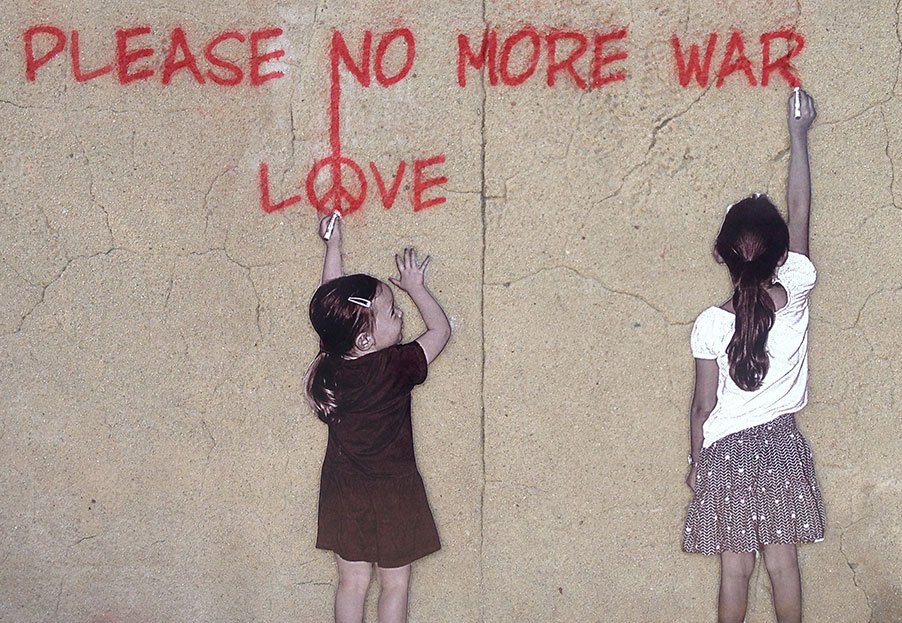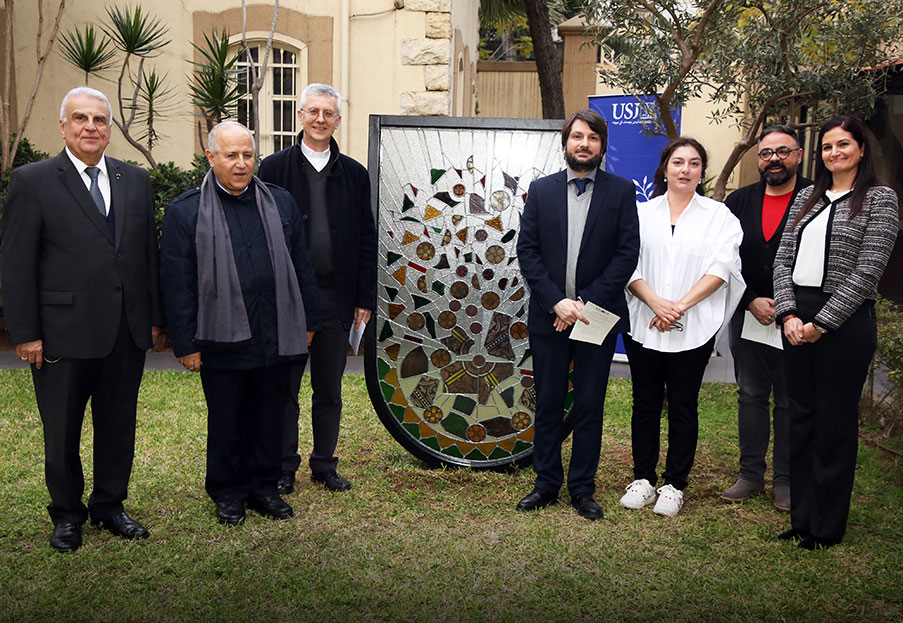
Carlo Spinola
Blessed
- Death: 09/10/1622
- Nationality (place of birth): Spain
Carlo Spinola (1564-1622) was moved to become a missionary by the heroic example of Rodolfo Acquaviva, the Jesuit martyr in India, but it took him many years and an incredibly complicated voyage before he could arrive in Japan where he eventually became a martyr himself. Along with him were Father Sebastian Kimura, the first Japanese to be ordained a priest, and seven Japanese men, mostly catechists, who joined the Society of Jesus and took their religious vows in prison just before they were killed.
In 1584 Spinola entered the Jesuits and studied philosophy in Naples. Poor health forced him to finish his philosophy in Milan, where he was ordained. Although he had asked to go to the foreign missions, he was assigned to remain in Italy giving parish missions. Two years after he was ordained, Father Spinola finally was assigned to the mission in Japan, but he needed six years, eight ships and great patience to arrive in Nagasaki, Japan after overcoming shipwrecks, pirates and obstacles.
The first ship he took from Genoa hit a rock and had to return to port. Once he had arrived in Barcelona and walked all across Spain, he left Lisbon on a ship whose rudder was shattered in a storm. After vainly seeking repairs in Brazil, the ship drifted back across the Atlantic to its starting point. Spinola's next attempt ended when English pirates captured his ship and took it to England. He eventually made it back to Lisbon, his starting point, two years after setting out. Finally in March 1599 the would-be missionary set off for the third time and reached Malacca, Malaya in July 1600.
Once he arrived in Japan in July 1602, Spinola studied Japanese and then went to the capital Miyako (today's Kyoto) where he was minister at the Jesuit college and teacher of mathematics and astronomy. Seven years later he moved to Nagasaki to care for the temporal needs of the province. The long period of peaceful relations with Shogun Iyeyasu ended in 1614 when he proscribed Christianity after the number of Christians in Japan reached two million. Non-Christian leaders considered this level of growth to be a national threat and convinced the Shogun that the missionaries were preparing the nation for a takeover by Spain. Dutch and English traders, who wanted to rid themselves of Spanish competition, encouraged this interpretation.
The Shogun's decree banished all foreign missionaries and forbade Japanese Christians to harbor priests or practice their religion. Around 100 Jesuits left Japan, but some remained, among them Spinola who eluded the priest-hunters for four years. Since he could not disguise his European features, he went out only after dark. Finally on the night of Dec. 13, 1618 he was captured along with Brother Ambrose Fernandes and their catechist, John Chogoku. They were imprisoned for four years in an enclosure made of stakes, similar to a bird cage, which offered no protection from the elements.
Sebastian Kimura (1565-1622) was born of Christian parents in Hirado, where he came to know the Jesuits. He later studied at the seminary in Arima and in 1582 joined the Society. He served as a catechist in Miyako before studying theology in Macao; he was ordained in Nagasaki in September 1601. An eloquent preacher, he became very skilled at disguising himself once Jesuits were banned. He might appear as a soldier, merchant, coolie or physician—giving him freedom to visit Christians and administer the sacraments. The police became aware of his activity and wanted badly to catch him, so his provincial ordered him to leave Nagasaki until the pressure eased. Before he could obey, he was arrested on June 30, 1621, along with his catechist, Thomas Akahoshi, and an assistant at the Jesuit residence, Louis Kawara. The three were sent to the prison in Suzuta along with Spinola and the other Christians.
Brother Fernandes died after 13 months of imprisonment, but Spinola managed to obtain what was needed for Mass which he celebrated daily. He even started a novitiate for seven imprisoned catechists who wanted to become Jesuits. When Spinola learned in September 1622 that they were to be taken to Nagasaki, he thought they would be executed, so he accepted the vows of his seven novices. Wearing cassocks smuggled into prison, they were led to Martyrs' Hill outside Nagasaki and tied to stakes to suffer death by "slow fire." Weakened by four years' imprisonment, Spinola died one half hour after the fire was lit. When fastened to the stake, he intoned the psalm, "Praise the Lord, All You Nations," and led the other martyrs in a song of thanksgiving to God for being called to witness to their faith.
Ambrose Fernandes (1551-16-22) was born in Portugal and went to India in 1571 to make his fortune. He served in the Portuguese army in Salsette, India, and worked with several merchants in Goa and Macao. While traveling for one of them, he feared his ship would sink during a singularly vicious storm and he vowed he would enter the Jesuits if he survived. He did, and entered the novitiate in Nagasaki as a brother in January 1579. He took care of material needs at the Jesuit community, but went undercover when the Jesuits were expelled. He was arrested with Father Spinola and imprisoned for 13 months before being martyred.
John Chugoku was born in Yamaguchi, Japan, about 1573. He served with an influential knight and accompanied him on an invasion of Korea. After he returned to Japan, his wife abandoned him so he moved to Arima where he came into contact with Jesuits. He began accompanying them on their missionary journeys and was eventually arrested with Spinola and Fernandes Dec. 16, 1618. He made his Jesuit novitiate in prison at Suzuta and pronounced his vows days before being beheaded on Sept. 10, 1622.
Anthony Kyuni also came from a noble family. He was married; and it is unclear whether his wife died or just gave him permission to move to Nagasaki and study at the seminary there. He became a catechist and worked with Jesuits in their printing press and the infirmary. With the Jesuits he went into exile in Macao in 1614, but returned three years later to live the life of a hermit. He picked a secluded spot on a mountain near Nagasaki. Michael Shumpo and Gonzalo Fusai joined him there and all were arrested in 1619 and taken to the former Jesuit novitiate in Nagasaki. Their actual novitiate began the next year when they were transferred to the prison in Suzuta and Father Spinola could direct them.
Michael Shumpo (1589-1622) was born into a Christian family in Owari, Japan, and entered the seminary in Arima. Later he became a catechist and sacristan of the church in Miyako. He went into exile but returned in 1617 to join Anthony Kyuni in his mountain hermitage. With Kyuni he was arrested and taken to Nagasaki.
Gonzalo Fusai came from a noble family in Okayama, Japan, where he was born about 1580. He served the daimyo of Bizen-Mimasaka and accompanied his lord during a military campaign in Korea. Later he left his position to move to Nagasaki where he became a Christian and served as a catechist. After exile in Macao, he joined his friends Michael Shumpo and Anthony Kyuni.
Peter Sampo was born in Oshu, Japan, around 1580. He emigrated to central Japan where he reached his goal of gaining a good position with a great lord; then later he moved again to Hiroshima where he became a Christian. Later he entered the service of the daimyo of Hoki, but moved to Nagasaki when his master died. He shaved his head and built a simple house right next to the Jesuit novitiate. Upon the advice of his neighbor, he became a catechist, later going into exile with the Jesuits. He returned to Japan and secretly resumed his work as a catechist before joining Anthony Kyuni's group on the mountain.
Louis Kawara (1583-1622) served in the court of Michael, prince of Arima, the place where Louis was born. When the priest renounced his faith, he wanted Louis to follow him; Louis pretended to apostatize but continued to live as a Christian. The prince became incensed when he discovered the ruse and confiscated his servant's property. With his family Louis moved to Nagasaki where they lived in abject poverty; eventually his wife and children died. Louis built himself a small house in a remote area and lived as an ascetic. People came to visit him and listen to his wisdom, eventually leading to his arrest on three occasions. On June 30, 1621 he was arrested with Fr. Kimura and imprisoned in Suzuta. Moved by the example of the others he met there, he entered the Society and pronounced his vows before being burned alive.
Thomas Akahoshi was born at Higo, Japan, around 1565. The son of a noble family, he served the daimyo of Higo. After his wife died, Akahoshi went to Nagasaki and became a catechist with the Jesuits. He went into exile with them in 1614, but returned with Father Kimura to Japan. The two were arrested together. Akahoshi entered the Society in prison at Suzuta and pronounced his vows before being burned alive.
Originally Collected and edited by: Tom Rochford, SJ


